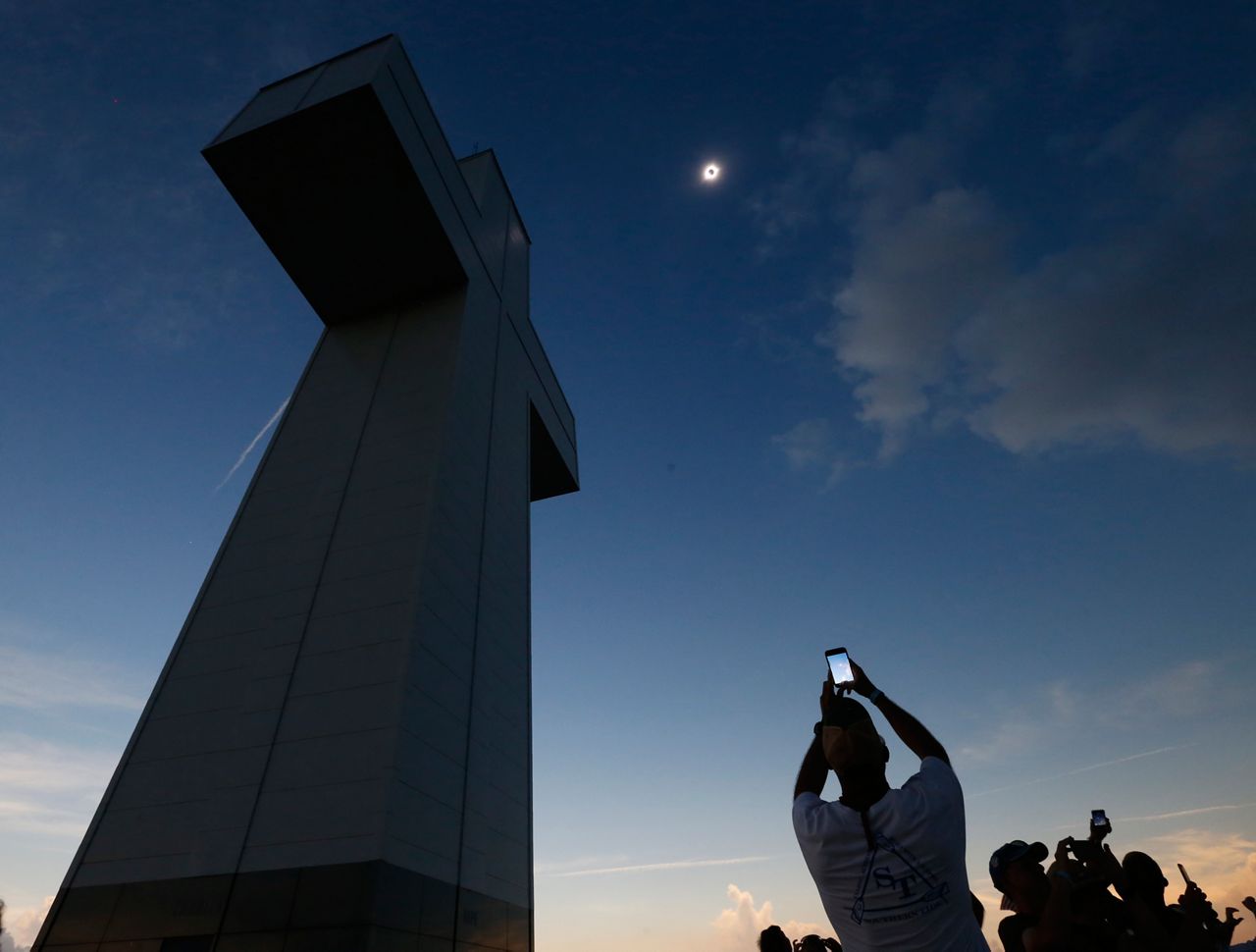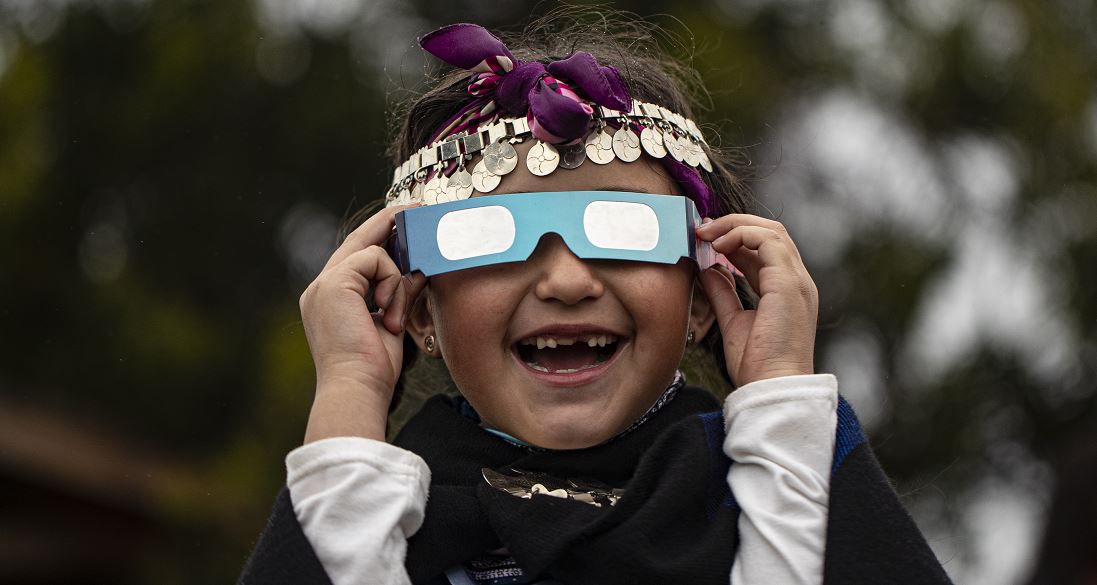One of the most awe-filled oddities of our skies took place early Monday in parts of South America.
While shooting stars fill our night sky early this week as the Geminid meteor shower peaks, for people in Chile and Argentina, Monday brought the only total solar eclipse of the year.
A solar eclipse occurs when the moon's orbit crosses directly in front of the sun, obscuring the star and casting a shadow on the Earth.
In a total eclipse, the moon blocks the entire body of the sun, except for its outer layer, known as the corona.
Since the sun is nearly 400 times more massive than the moon, the time elapsed when the moon completely blocks out the sun is a relatively short one. This period is known as totality and occurs in a narrow band typically only 50 miles across.
Though breath-taking, viewing a solar eclipse with the naked eye can cause serious injury. Just as you shouldn't look directly at the sun on a normal day, the intense light from the sun's corona during an eclipse can lead to blindness in just a very short period of time.
Special safety goggles that block out UV, infrared, and visible light from the sun are worn to properly, and safely, enjoy an eclipse.
While much of South America was able to view a partial eclipse of the sun, totality was only visible to some in Chile and Argentina.
Unfortunately, wet weather clouded efforts to view the eclipse in Chile, while Argentina faired much better in viewing conditions.
If you weren't in either of these two countries, you’re still able to view the eclipse online or on television. NASA TV broadcastthe eclipse from beginning to end. You can also watch their live stream here.
Totality for this eclipse ran about 2 minutes and 10 seconds, or about 30 seconds shorter than the one we saw across North America in 2017.
To those looking for the next opportunity to see one for themselves here in the United States, you have a few more years to wait.
The next total solar eclipse visible in the U.S. will occur on April 8, 2024.
Though a partial eclipse will be visible across the entire continental U.S., totality will occur in a narrow band from New England to the Midwest down to the Southern Plains.
This will be the first total solar eclipse visible in the U.S. since 2017. Prior to that, you have to go back to the late 1970s to view one here in the states.

Spectrum Chief Meteorologist Jeff Crum was one of the lucky ones in the path of totality of the 2017 eclipse. He described it as a humbling experience.
"It was odd watching us go from bright sunshine to dusk and birds starting the evening songs. We were right in the path of the full eclipse and that wasn't something I had seen since I was five or six years old," Crum shared.
"Charlotte shut down, people came outside and with their protective eye coverings, looks towards the heavens to watch the show. Almost like a snow day, the city was quiet, we all took in the show, and frankly, we're in awe of this rare alignment right over our area."
While we missed out on this latest eclipse, mark your calendars for 2024!



